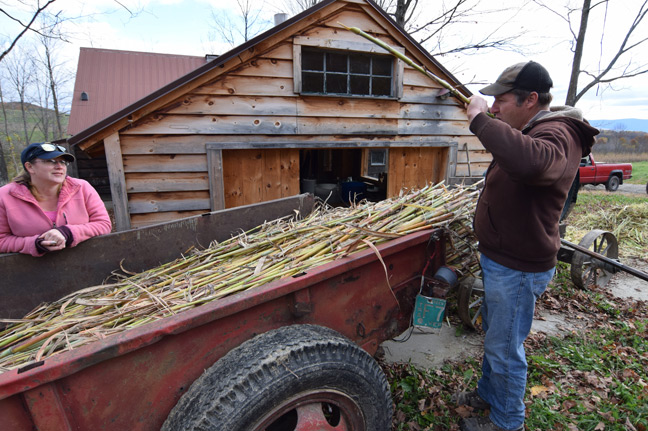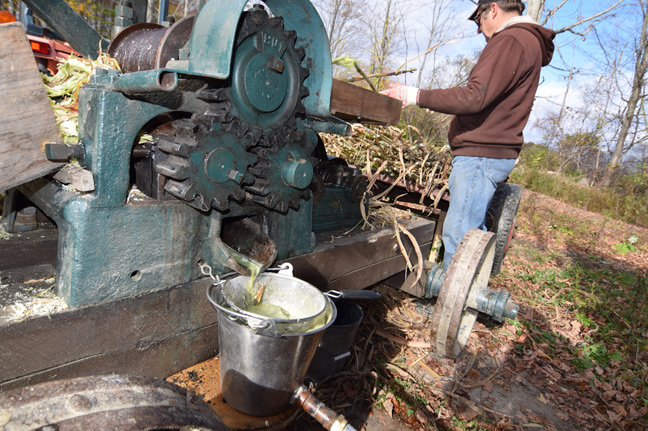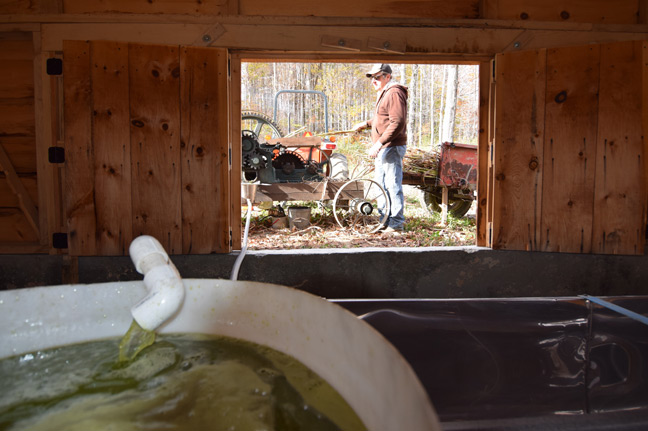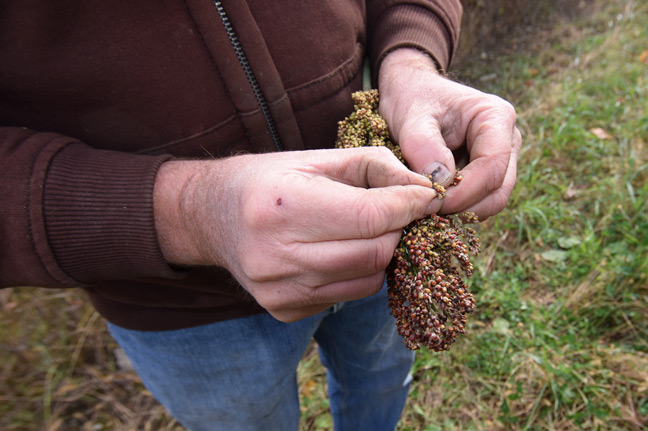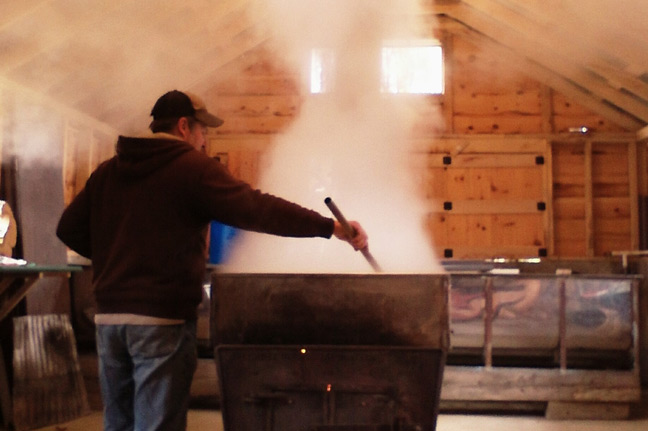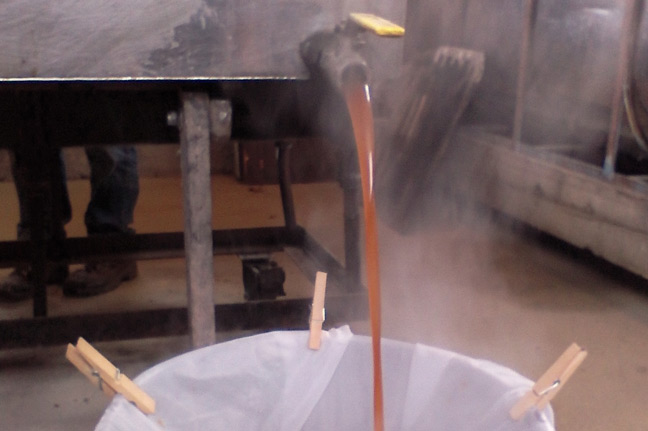Sugarmaker Profiles
Sorghum season
Vermont sugarmaker makes a fall crop
By PETER GREGG | NOV. 3, 2016
SHAFTSBURY, Vt.—It’s late October and John Williamson of Shaftsbury, Vt. will soon be boiling in the sugarhouse. But not maple—sorghum.
“It wouldn’t feel like fall if we weren’t making sorghum,” he said.
A longtime sugarmaker of the maple syrup variety, Williamson has been making sorghum every autumn for the past 21 years.
Through much trial and error Williamson, along with his wife, Melissa, has sorghum-making down to an efficient process, boiling on flat pans and drawing off at 227 to 228 degrees. Sorghum syrup is very fickle and unlike maple, is totally unforgiving if you go too far boiling it.
The product itself, while looking a lot like maple syrup, does not have the same kind of sweetness of maple. It’s more bitter. Sorghum makes for a better cooking ingredient. In the South, where sorghum is very popular, folks spread it on biscuits.
Williamson has rigged his evaporator to fit three separate flat pans that he rotates and shuffles over the firebox one by one. He filters through cheese cloth and mesh.
The hardest part of the process is harvesting the 12-foot high sorghum stalks. This year, he had about an acre planted. In other years he’s had as much as four acres.
Similar to corn stalks, sorghum originates from Africa and has many different strains. Williamson has tried as many as 50 different varieties.
“You need to choose the right variety to grow for your soil and climate,” he said.
He has tried every method of harvesting, using various mechanical methods. But what works best is to whack the leaves off the stalks with a wooden stick and then slice the cane with a machete as close to the ground as possible (the most sugar is closest to the roots).
“There’s a lot of tricks to doing this,” he said. “It’s taken me 20 years to learn.”
After chopping, he stacks the cane in the field, collects and brings back to the sugarhouse.
There, he grinds the stalks in an old grinder (a Chattanooga, circa 1910) that he runs off the tractor PTO. The sorghum harvest usually takes about two days, after the killing frost.
Typically the “juice” from the grinded stalks is 18 percent sugar and Williamson said he expects to make 25 gallons or so off his one acre field of cane. It’s about a 6-1 ratio.
“I like making sorghum because you utilize your sugarhouse and some of your equipment during the fall, and usually during peak foliage season, so everyone comes around,” Williamson said.
He said the product sells well side-by-side with maple. It’s not a huge money-maker for him, but he enjoys doing it so much that it will always be a ritual on the farm for he and Melissa.
“I like that it mixes farming and sugaring,” he said. “It’s been an exciting process.”















